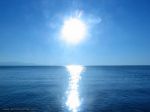
A dock line leading forward or aft, to prevent a vessel from moving ahead or astern. The after bow spring line is attached near the bow and runs aft, where it is attached to the dock. The forward quarter spring line is attached to the quarter of the boat, ...

